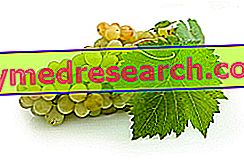Blueberry, Vaccinium myrtillus, Ericacee family; it is characterized by flavonoids, in particular anthocyanins, known for their capillarotropic properties.
Blueberry is a small shrub that lives in the undergrowth in the mountains, at certain altitudes; the drug consists of leaves and fruits. The leaves contain active ingredients, such as tannins, phenols - such as Arbutin (Uva Ursi) - and anthocyanins; the function of the anthocyanins in the blueberry, together with their high concentration, is associated for the most part to the fruits, so much so that the leaves are used in association with the bearberry with a completely different functional expression with respect to the drug fruits.
The fruits of the blueberry, after harvesting, can be dried, lyophilized, stabilized or subjected to use of preservatives. In most cases they are freeze-dried, because the amount of water inside them is particularly high and must be eliminated as quickly as possible; this is the only way to preserve and use, as a drug, in herbal preparations, such as herbal teas.
Blueberry fruits are berries containing a large amount of anthocyanins; the anthocyanins are glycosylated and have capillarotropic properties, aimed at the toning of the retinal microcirculation (they increase the resistance of the retinal capillaries reducing their permeability and favoring the proliferation, development and growth of the capillary network). So, ultimately, blueberries are an excellent vision tonic, for visual improvement, especially in the tired eye; night vision is also improved.



